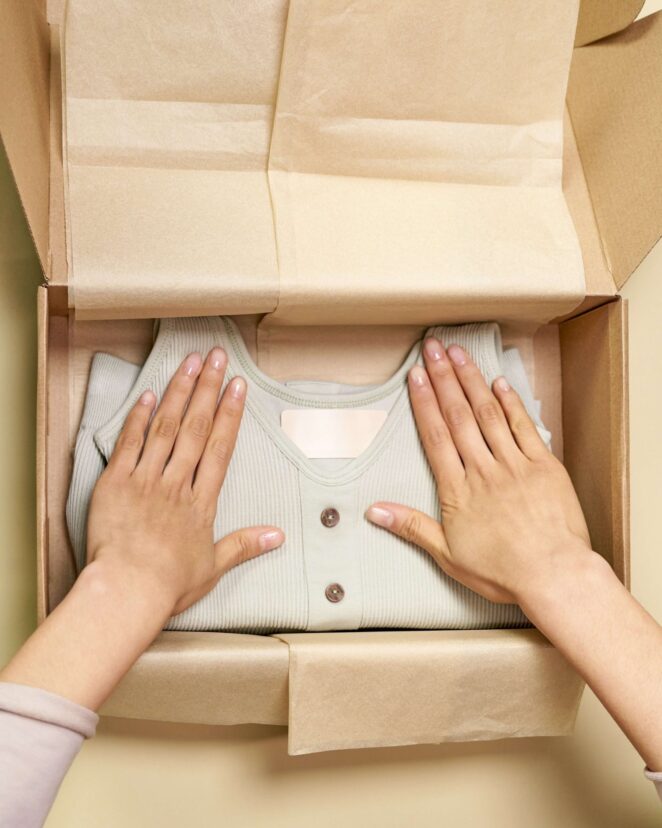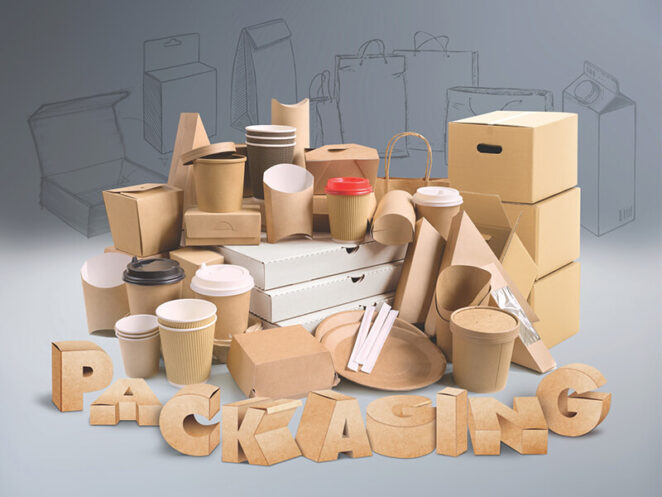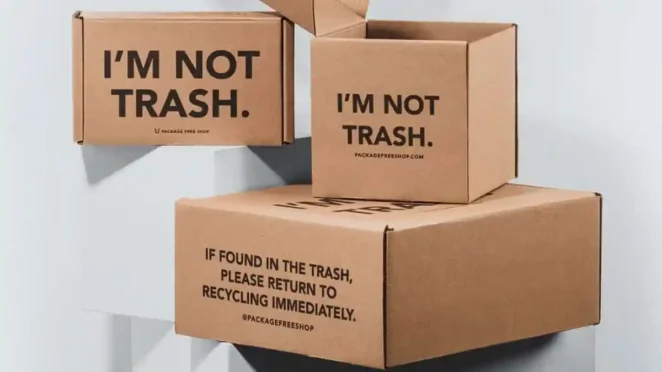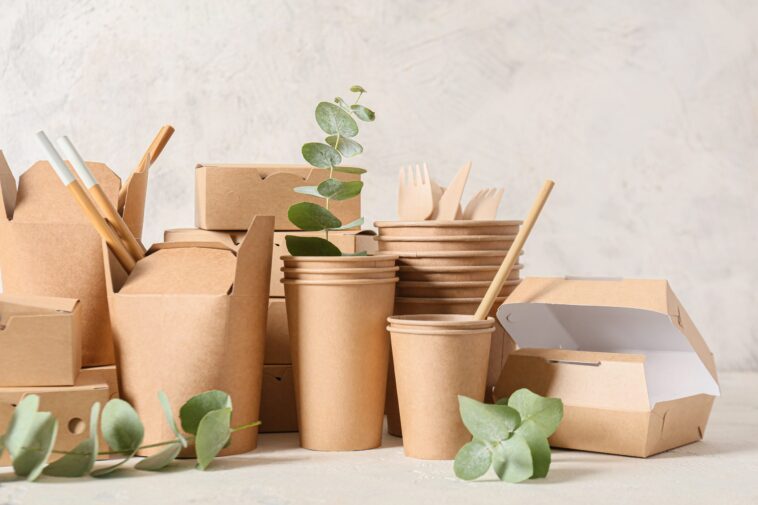Sustainable packaging materials have become increasingly important in the modern world. As more and more people are becoming aware of the importance of preserving the environment, there is a growing need for businesses to use sustainable packaging materials.
This article will provide an overview of different types of sustainable packaging materials available on the market today, as well as discuss their benefits and drawbacks. It will also outline how to choose the best material for your needs.
Definition Of Sustainable Packaging
Sustainable packaging is an important concept in the modern world. It involves designing, producing, and disposing of packaging materials with minimal environmental impact. The goal of sustainable packaging is to reduce pollution, conserve resources, and minimize waste.
The use of sustainable packaging materials can have a range of benefits for businesses as well as consumers. By utilizing more environmentally friendly products, companies can increase their reputation as responsible stewards of natural resources while also reducing their costs associated with production and disposal.
Consumers benefit from greater access to eco-friendly options that are better for the environment and less damaging to public health.
When selecting sustainable materials for packaging, it is important to consider both short-term cost factors such as manufacturing efficiency and long-term sustainability goals like recyclability or biodegradability.
By understanding the various types of available materials and their respective advantages and disadvantages, businesses can make informed decisions when developing their product’s packaging design.
Types Of Sustainable Packaging

The types of sustainable packaging materials available to consumers and businesses have increased significantly in recent years.
These range from bio-based plastics and renewable paper sources, to compostable packaging materials such as jute, hessian, and cotton:
- Bio-Based Plastics
- Corn Starch Packaging: derived from corn starch and is biodegradable under industrial composting conditions
- Polylactic Acid (PLA) : derived from sugarcane or other plant starches, composts in 5 weeks
- Renewable Paper Sources:
- Recycled Cardboard Boxes: made from recycled cardboard & paper pulp and are 100% recyclable
- Sugarcane Bagasse: a byproduct of the sugar industry which can be used for food containers & cups that decompose quickly once discarded
Compostable packaging materials such as jute, hessian, and cotton offer an attractive solution due to their durability.
Jute bags are ideal for carrying groceries and other items with ease; hessian sacks provide superior protection against moisture, dust, dirt and pests; while cotton bags are reusable alternatives to plastic shopping bags.
All of these options promote reuse rather than single use products. Additionally, these materials break down naturally when disposed of in landfill sites or home compost bins without releasing harmful chemicals into the environment.
Advantages Of Sustainable Packaging Materials
Sustainable packaging materials are gaining prominence in the global market as they offer a number of advantages over traditional options. By reducing the amount of non-renewable resources used and eliminating waste, sustainable packaging solutions can help to reduce environmental degradation.
Additionally, these materials provide cost savings for businesses due to their lower production costs and decreased need for transportation or storage space.
The use of sustainable packaging materials also offers benefits such as improved product safety and extended shelf life. These materials are designed to protect products from damage during transport, ensuring that consumers receive high quality goods.
Moreover, because most sustainability focused packaging are airtight with an adequate barrier property, they can extend the lifespan of perishable items by significantly slowing down spoilage caused by oxygen exposure or humidity levels.
In addition to these practical benefits, many companies have adopted sustainable packaging as part of their corporate social responsibility (CSR) initiatives. This has enabled them to differentiate themselves from competitors on ethical grounds and enhance brand image among customers who value environmentally friendly practices.
As more organizations continue to embrace this trend, it is likely that its popularity will only increase in the future.
Disadvantages Of Sustainable Packaging Materials

The portrayal of sustainable packaging materials as being nothing but beneficial is not wholly accurate. While these materials undoubtedly have their advantages, they also come with some drawbacks that cannot be overlooked. Like a wolf in sheep’s clothing, the disadvantages of sustainable packaging can lurk beneath its attractive veneer.
For one, many environment friendly packaging solutions are more expensive than traditional options. They often require more time and resources to produce, which may cause companies to incur additional costs.
Furthermore, their availability is still limited compared to conventional alternatives such as plastic or cardboard boxes.
For example, biodegradable plastics can only be used for small items due to their brittleness when exposed to extreme temperatures and moisture levels. This means businesses must pay extra attention when selecting suitable containers for different products or risk damaging them during shipping.
Moreover, certain types of sustainable packaging can lack durability if subjected to poor storage conditions or incorrect handling practices by consumers. This could lead to an increase in waste generation from damaged goods and create problems for those managing the disposal process afterwards.
In addition, heavier ecological packages might contribute higher carbon emissions during transport if the delivery routes are not optimized properly.
It is therefore essential that responsible measures are taken in order to minimize any potential negative impacts on the environment while utilizing green packing methods wherever possible.
In summary, although it has many benefits over traditional materials, there are several aspects of sustainable packaging that should not be ignored – particularly regarding cost effectiveness and robustness against mishandling or harsh environmental factors – before it can become a viable option for all types of businesses seeking greener product solutions.
Environmental Benefits Of Using Sustainable Packaging
Despite the disadvantages related to sustainable packaging materials, it is important to note that these materials also offer many environmental benefits.
Sustainable packaging can reduce greenhouse gas emissions, help preserve natural resources and minimize waste in landfills. In addition, using renewable sources for manufacturing helps conserve energy and reduces reliance on non-renewable sources of energy such as fossil fuels.
One key benefit of sustainable packaging materials is their ability to decrease greenhouse gas (GHG) emissions associated with production and transportation processes.
For example, replacing traditional plastic packaging with biodegradable or compostable alternatives may result in lower GHG emissions due to less intensive manufacturing processes and reduced need for long distance shipping.
Additionally, some materials are produced in a way that requires fewer inputs like petroleum and chemicals compared to other forms of packaging. This may lead to reductions in air pollution from fuel burning activities associated with production, distribution and disposal processes.
Another advantage of sustainable packaging relates to its potential for preserving resources including water and raw material inputs used for manufacture.
By utilizing recycled paperboard or plant-based plastics instead of virgin material substitutes, companies can save both water and energy while reducing landfill waste outputs at the same time.
Additionally, when products are packaged in reusable containers or bags made out of durable components they have greater lifespans than single-use items which translates into fewer resources required over time.
These advantages clearly demonstrate how sustainable packaging solutions can be beneficial not only economically but also environmentally by helping mitigate climate change impacts through decreased carbon dioxide emissions as well as resource conservation measures.
Furthermore, use of sustainably sourced materials encourages responsibility among businesses when considering product design decisions thus promoting positive environmental practices throughout organizations’ entire supply chains.
Cost-Benefit Analysis Of Sustainable Packaging

The cost-benefit analysis of sustainable packaging is complex, with multiple variables to consider.
First and foremost, the initial costs associated with transitioning from traditional packaging materials to more sustainable options must be taken into account. Factors such as upfront investment in new machinery or equipment and increased labor costs are worth considering when assessing the viability of switching to sustainable alternatives.
In addition, it is important to evaluate any potential returns on investments that may arise over time due to reduced waste management expenses or possible tax incentives for using more eco-friendly materials.
Another factor to consider is consumer preference; consumers today are increasingly looking for products packaged in environmentally friendly containers and materials.
Companies have an opportunity to capitalize on this trend by investing in sustainable packaging solutions that can help them gain a competitive edge in their respective markets.
Moreover, some studies suggest that businesses which adopt green practices tend to enjoy higher customer loyalty levels than those who do not, resulting in additional opportunities for revenue growth.
Overall, sustainability initiatives undertaken by companies should be carefully evaluated based on expected short-term costs versus long-term benefits.
With thoughtful planning and consideration of all relevant factors, organizations can reap significant rewards from implementing sustainable packaging strategies while ensuring environmental responsibility at the same time.
Common Pitfalls And Solutions
The journey to sustainable packaging is not without its obstacles. Switching from traditional materials to eco-friendly alternatives can be a daunting task, as there are many common pitfalls that companies should be aware of before taking the plunge.
All too often, businesses make crucial mistakes when transitioning to more sustainable options that cause them to miss out on the full range of benefits available.
To ensure a successful switch, it’s important for companies to consider the following:
- Potential cost increases due to lack of volume discounts or additional required equipment
- The need for specialized training and education for employees
- Uncertainties around customer acceptance and market trends over time
- Product integrity issues such as potential damage during shipping or storage
Making sure these potential problems are addressed in advance can help prevent costly delays and setbacks later down the line. Companies need to understand that sustainability initiatives require careful planning and foresight if they want their efforts to pay off.
It’s also essential that organizations have realistic expectations regarding progress; even small steps taken towards achieving greater sustainability will benefit both business operations and the environment in the long run.
By investing resources upfront into research and development, companies can mitigate risk while still reaping rewards in the future.

Conclusion
In conclusion, sustainable packaging materials are becoming increasingly popular due to their numerous benefits. Sustainable packaging is a form of packaging that produces minimal environmental impact and uses fewer resources in production than traditional packaging.
The advantages of sustainable packaging include decreased greenhouse gas emissions, reduced waste, improved recyclability, cost savings, and increased customer satisfaction.
While there may be some disadvantages associated with sustainable packaging such as higher costs or lack of appropriate infrastructure for recycling, these can often be addressed with the right solutions. Moreover, since utilizing sustainable materials has many positive environmental impacts and financial implications, it is clear that they should become the norm rather than an exception when it comes to packaging products.




